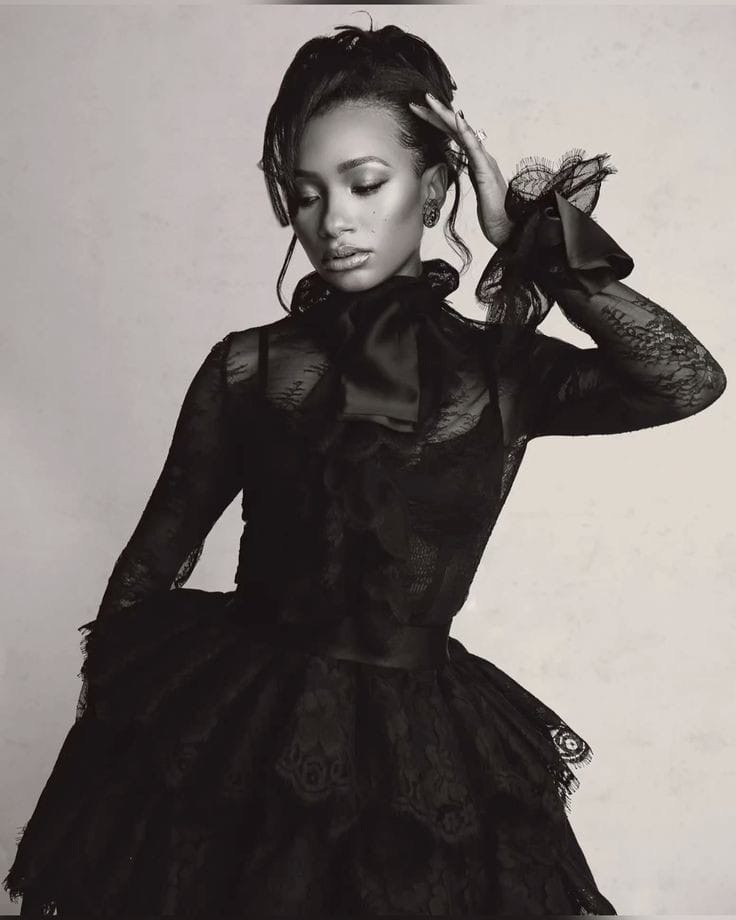
Few garments in fashion history carry the same power, mystery, and timeless appeal as the little black dress. From Audrey Hepburn’s elegance in Breakfast at Tiffany’s to its reinvention on countless runways, the Little Black Dress (LBD) has become more than clothing — it is a global symbol of simplicity, sophistication, and strength.
But what makes the little black dress so powerful is not just its universal appeal, it is its ability to adapt, to tell different stories depending on who wears it, where it is worn, and how it is styled. In Nollywood, the little black dress has often been the shorthand for confidence, allure, or reinvention. When a woman walks into a scene in one, the audience knows something has shifted — power, desire, or destiny.
For Nigerian women, the little black dress has also been reimagined through our own lens of culture and creativity. It is never just plain. It may be adorned with aso-oke trims, Ankara accents, or daring gele headpieces. We take a global icon and make it ours, layering tradition over modernity, just as Nollywood does with every story we tell.
As a costume designer, I see the little black dress as a storyteller’s weapon. It can transform a character from vulnerable to commanding in seconds. It is minimalist, yet never empty. In its simplicity lies endless possibility.
The little black dress is not just fashion, it is attitude. It is memory. It is the canvas on which women paint their identity. And in Nollywood, as in life, it reminds us that style is not about excess — it is about presence.
The LBD is special and memorable because it is more than just a garment—it’s a cultural icon, a symbol of elegance, and a timeless piece of fashion history. Here are the key reasons why it stands out:
1. Timeless Elegance
Introduced by Coco Chanel in the 1920s, the LBD was designed to be simple, versatile, and universally flattering.
Unlike trend-driven pieces, it has never gone out of style—every generation reinvents it while keeping its core appeal.
2. Versatility
It can transition effortlessly from day to night, casual to formal, minimal to glamorous.
With just a change of accessories—pearls, heels, a blazer, or bold jewelry—the same dress can serve multiple purposes.
3. Cultural Symbol
Made iconic by Audrey Hepburn in Breakfast at Tiffany’s, the LBD became a cinematic symbol of sophistication.
It represents effortless glamour—less about excess, more about refined simplicity.
4. Democratisation of Style
When Chanel introduced it, black was traditionally reserved for mourning. She redefined it as chic, accessible, and fashionable.
The LBD was designed to be affordable, making style attainable for women beyond the wealthy elite.
5. Empowerment & Identity
Wearing an LBD gives many women confidence because it embodies poise, mystery, and allure.
It balances modesty and sensuality, power and femininity—allowing the wearer to define herself on her own terms.

6. Fashion’s Blank Canvas
The simplicity of the LBD allows for endless interpretation.
Designers use it as a canvas for innovation, while women use it as a backdrop for personal expression.
In essence, the LBD is memorable because it’s both universal and personal—a garment that belongs to history yet adapts to the individuality of whoever wears it.
Yolanda Okereke is a visionary fashion entrepreneur and respected industry leader, known for her exceptional work as a Costume Designer and Creative Producer in Film and Television. With over a decade of experience, she has consistently shaped the visual identity of some of Nollywood’s most iconic productions, earning a reputation for her artistic depth, organisational precision, and bold storytelling through costume.
She is the Founder and Head of The Rani Company, a leading costume design and styling firm, and The Wardrobe Shack, a costume rental house serving high-profile film and television projects across Nigeria.